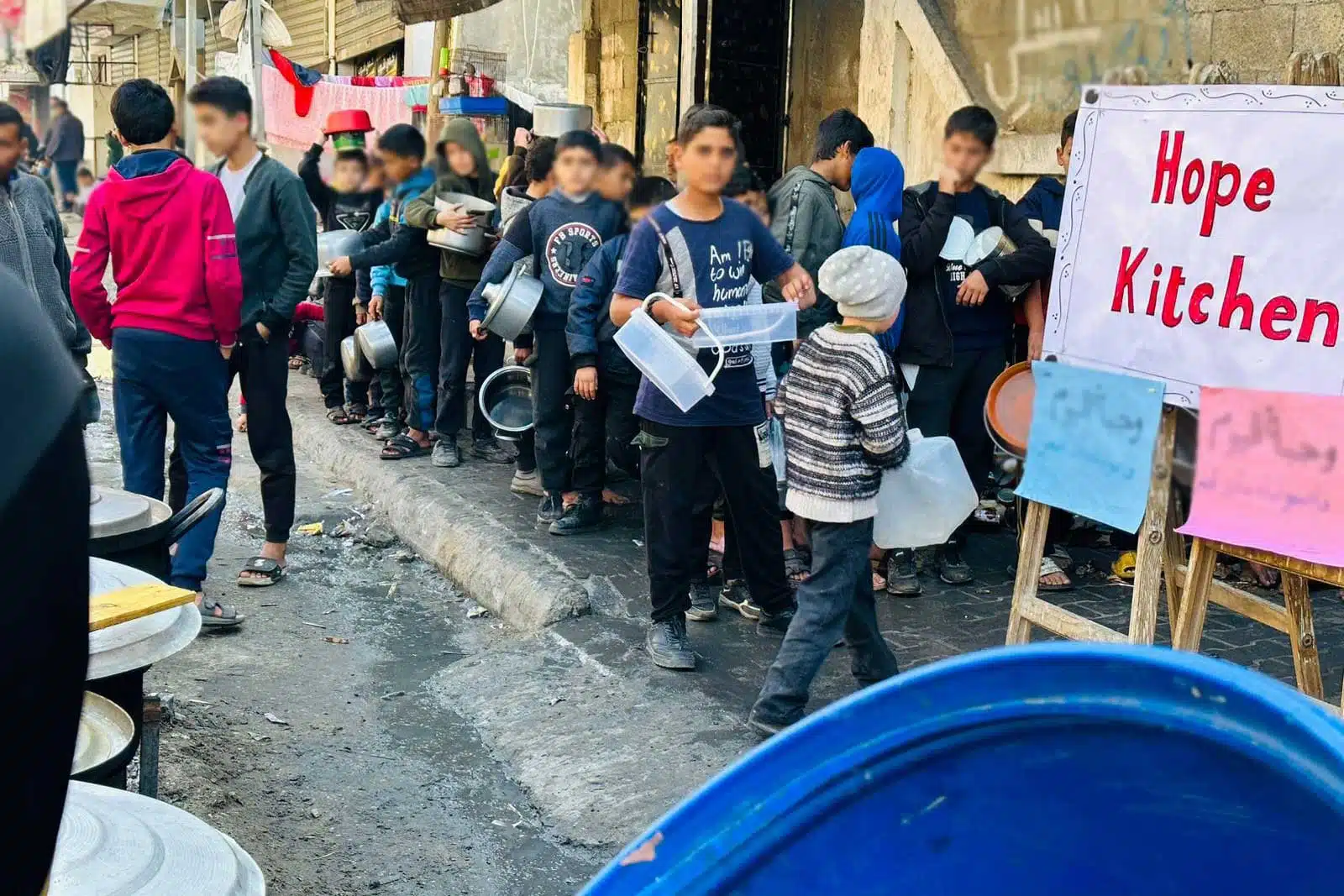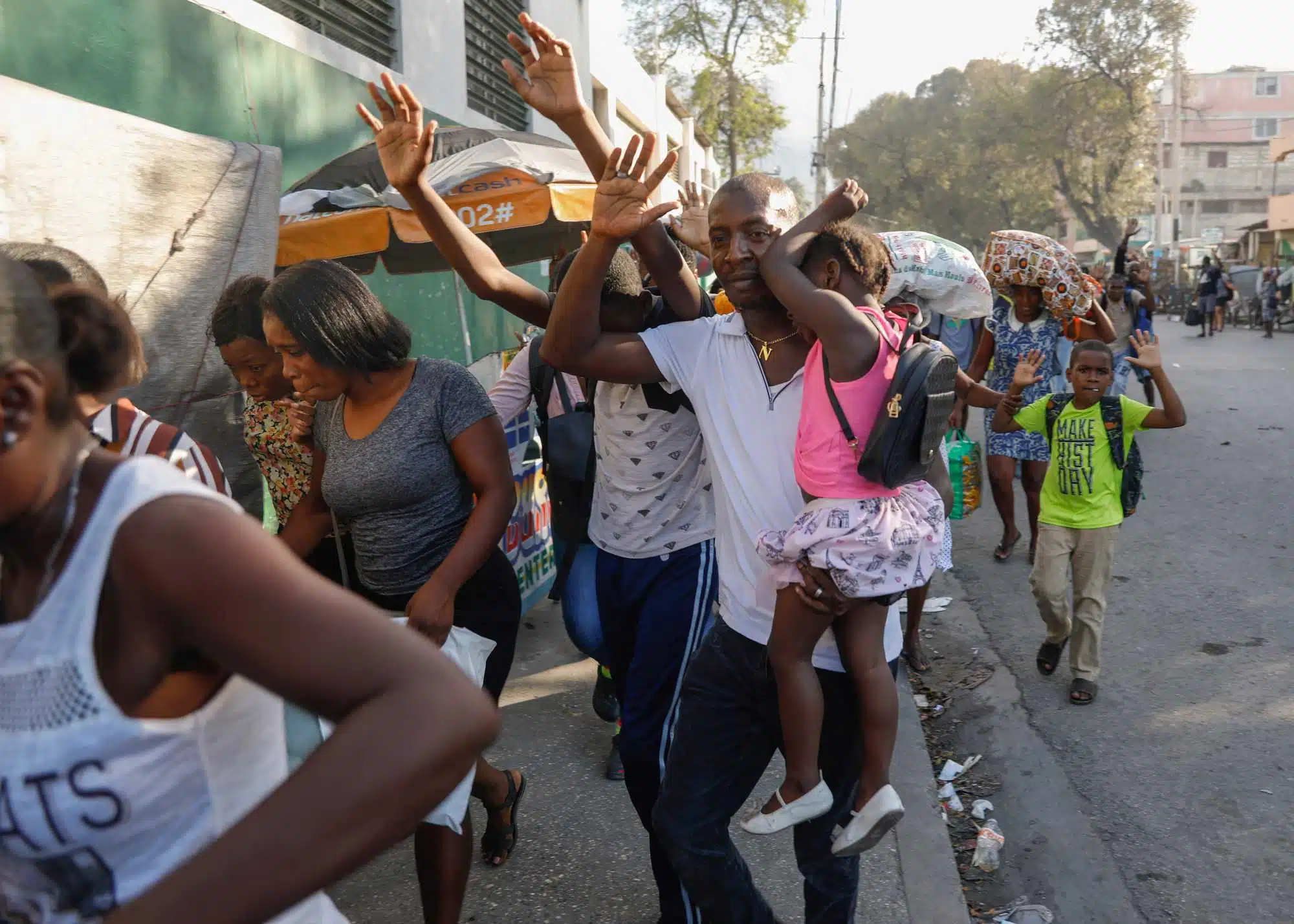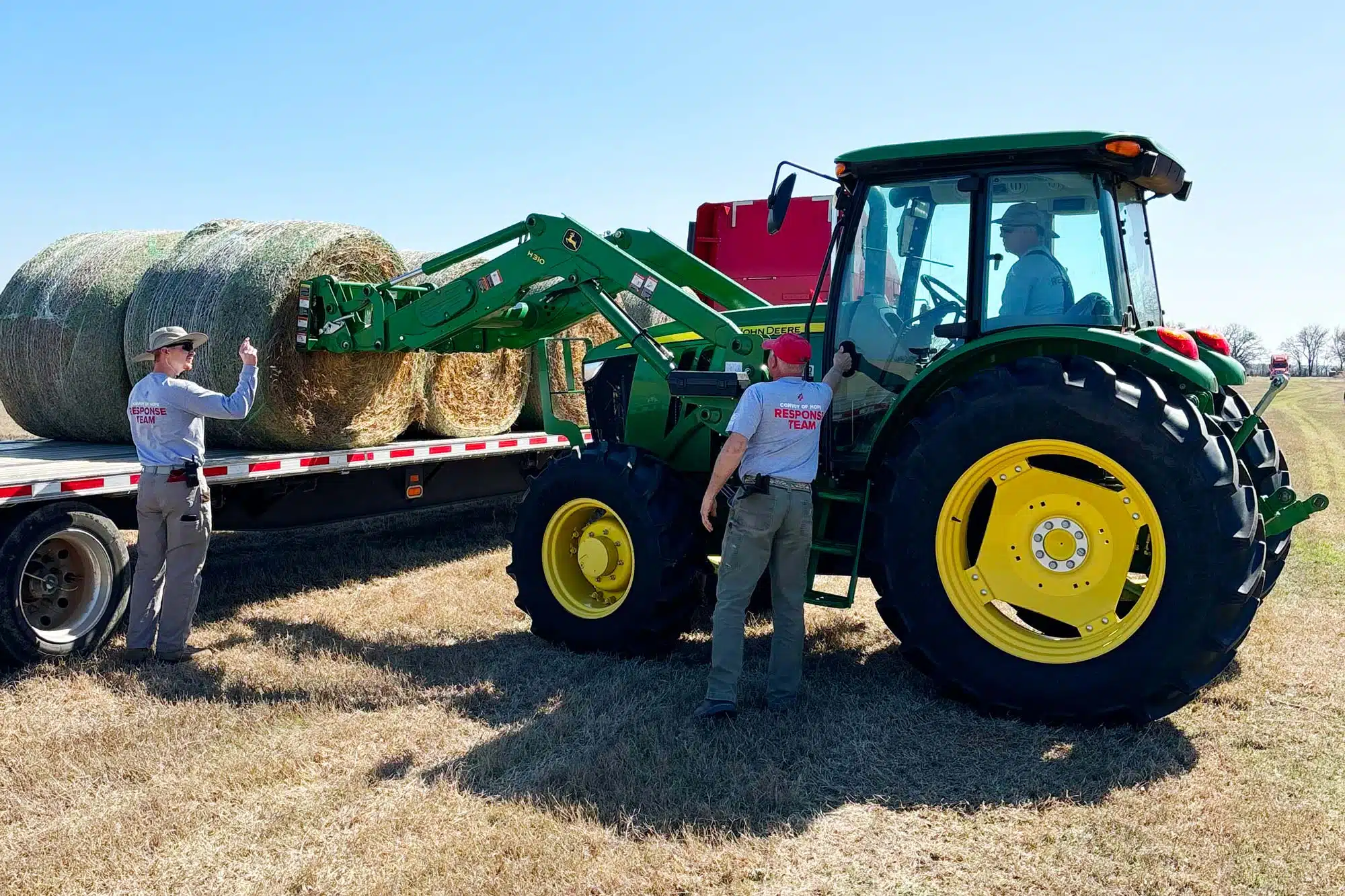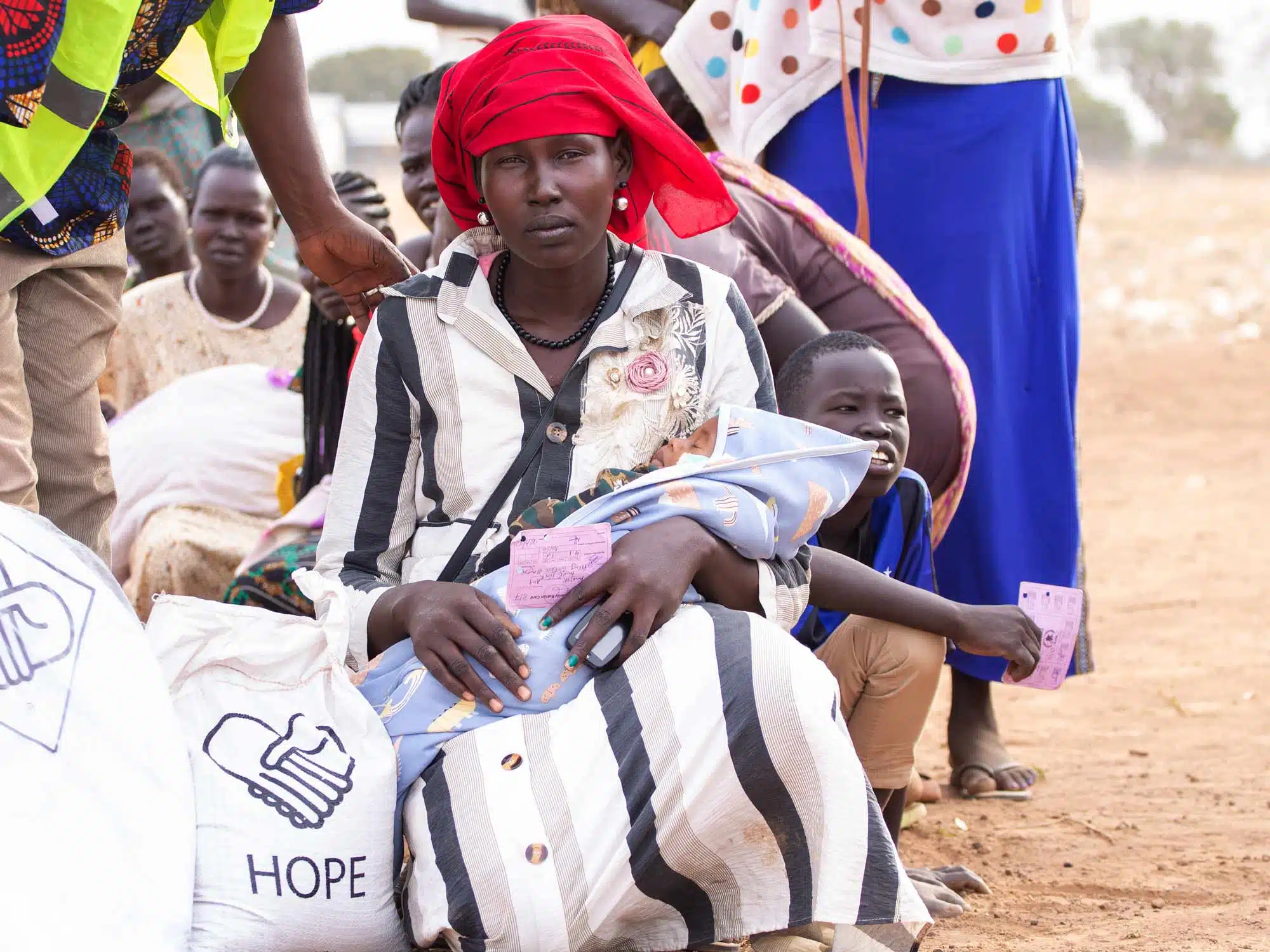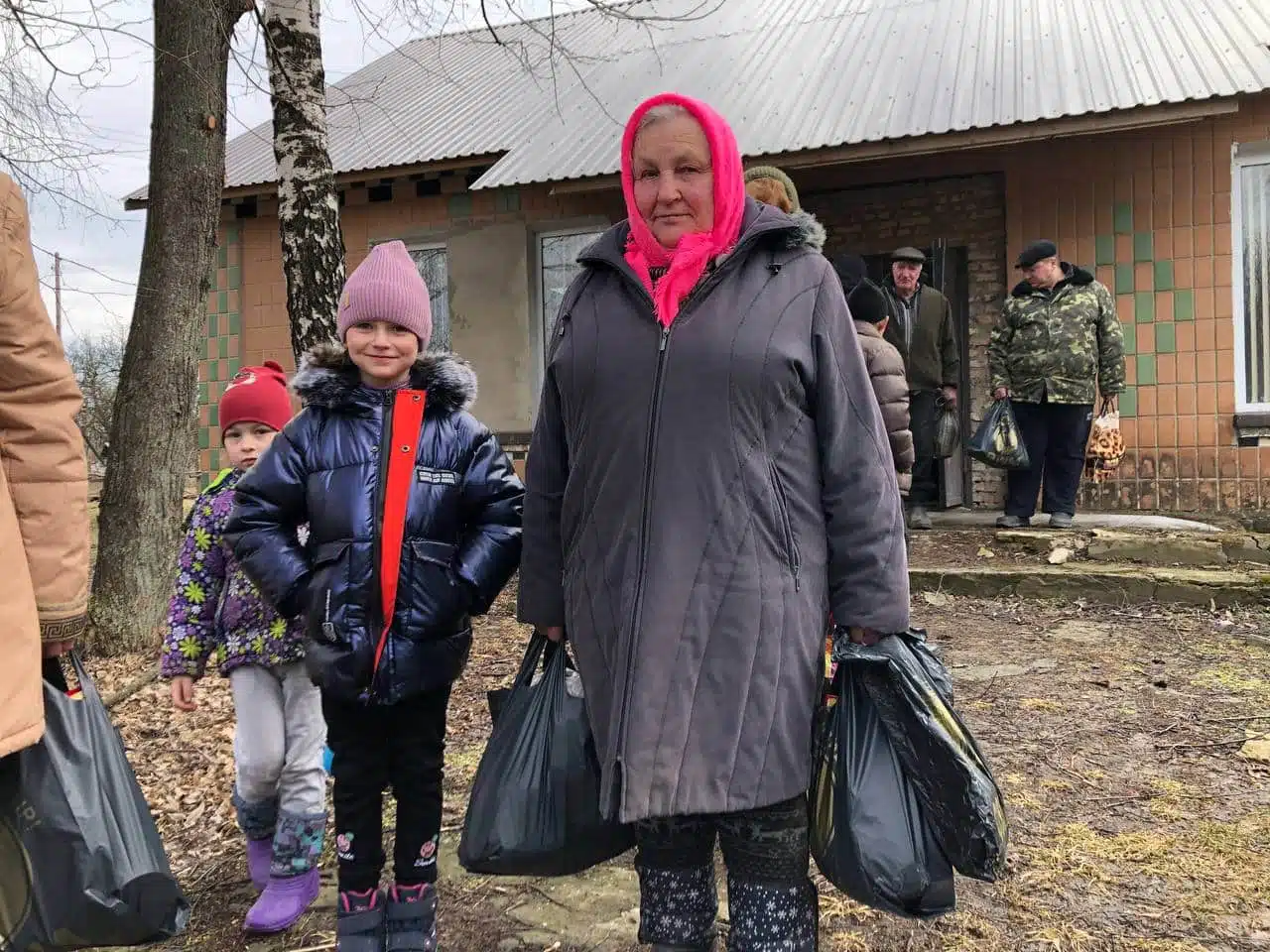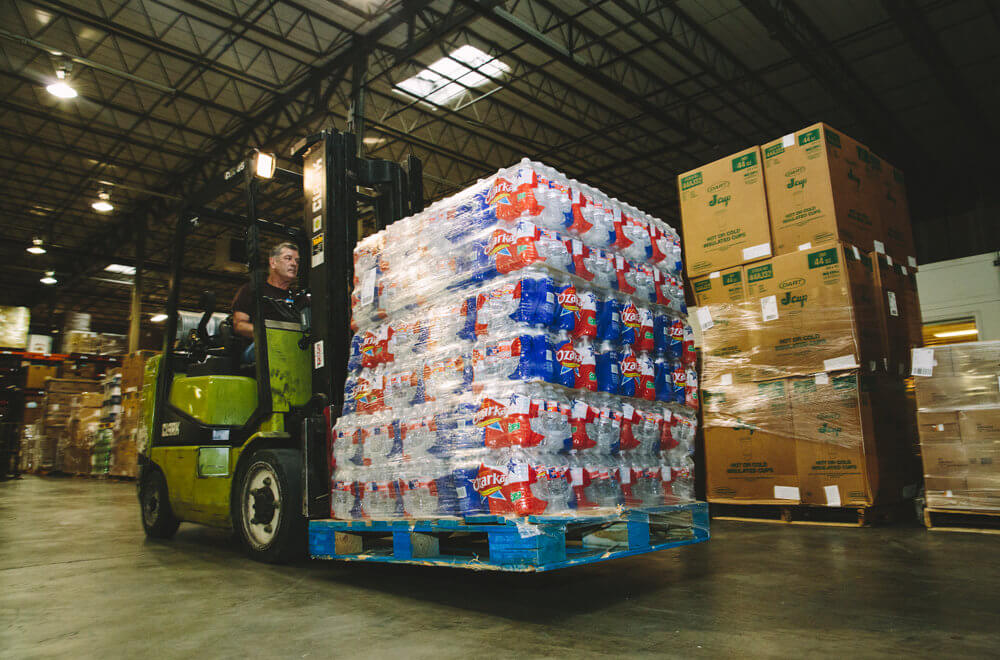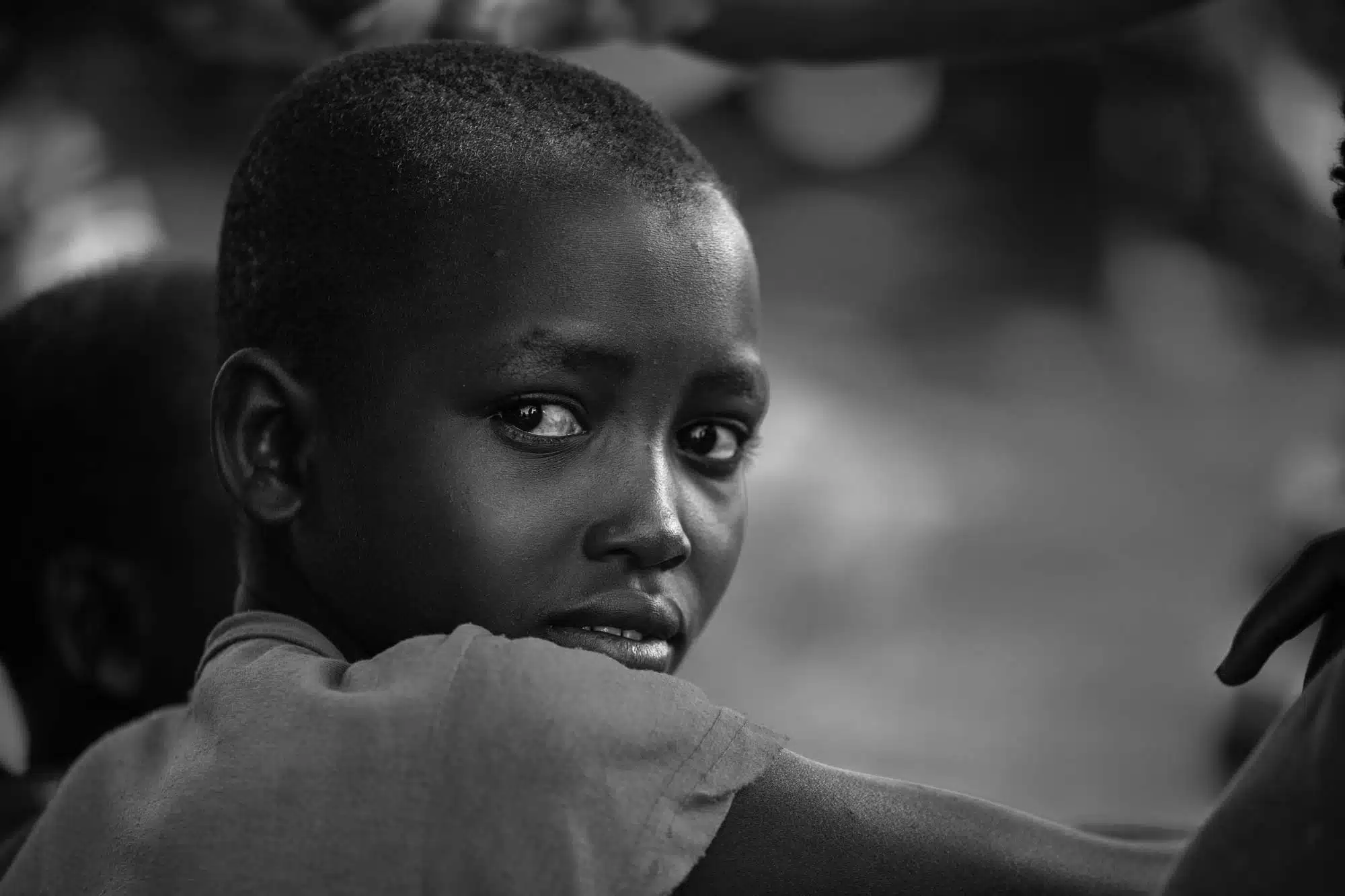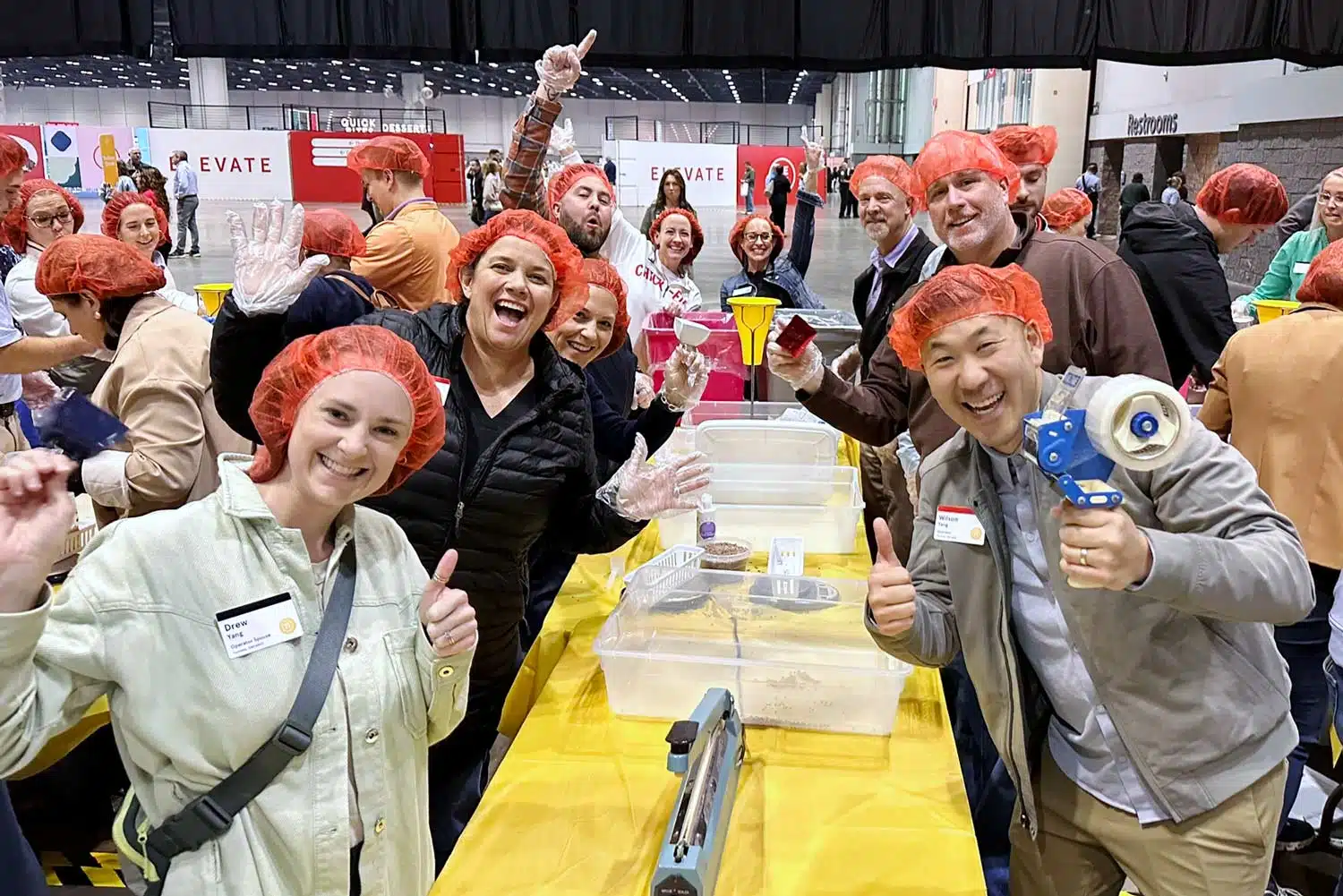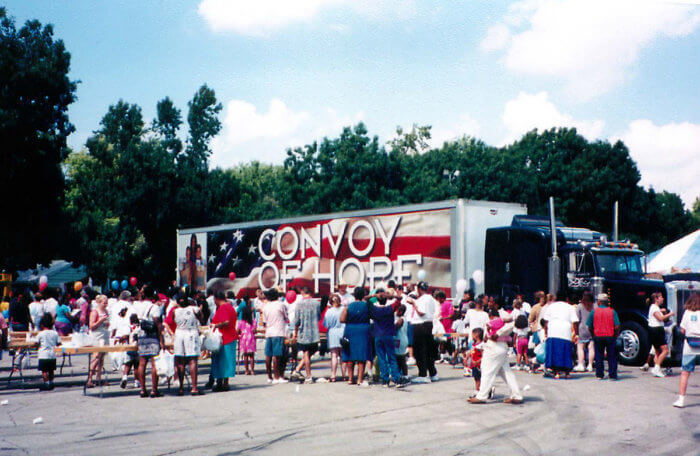
Hope is often thought of as something one cannot see, but many people have seen hope in the form of a Convoy of Hope truck driving toward a community in need.
“I was driving down the street … and these big, monster Convoy of Hope trucks drove right by me,” said Julian Toriz about passing the trucks on his way to a Community Event in Los Angeles. “Three big trucks — boom, boom, boom. I got out my camera. I’m trying to drive and I’m like, ‘I got to document this.’”
Today, Convoy has a fleet of tractor trailers and equipment. It all started, though, with just one tractor trailer.
When Hal Donaldson entered a business luncheon in 1997, trucks weren’t on his mind. He was there to speak about taking care of the poor. So it came as a surprise when he was approached by businessman David Cribbs, who asked Hal to pay him a visit.
When the two met, David got right to the point. He offered to buy an 18-wheel tractor-trailer and to provide fuel, maintenance, and a driver for a year.
Owning our own truck revolutionized the way we help people. We ensured that we offered the best products to the Guests of Honor at our Community Events.
The generous donation of that first truck opened incredible new doors for Convoy of Hope. Years later, David Cribbs continues to serve the organization as a member of the Board of Directors.
David remembers the first time he drove that first truck to an event. Pulling up around 2:30 a.m., there were already more than 1,000 people waiting for the truck to arrive. “That’s when I thought this may be bigger than I’d imagined,” David said.
Today, Convoy’s fleet of trucks continues to deliver hope to millions of people around the world. From Community Events to disaster responses, when people see a Convoy of Hope truck, it’s a symbol of hope and sign that help is on the way.
